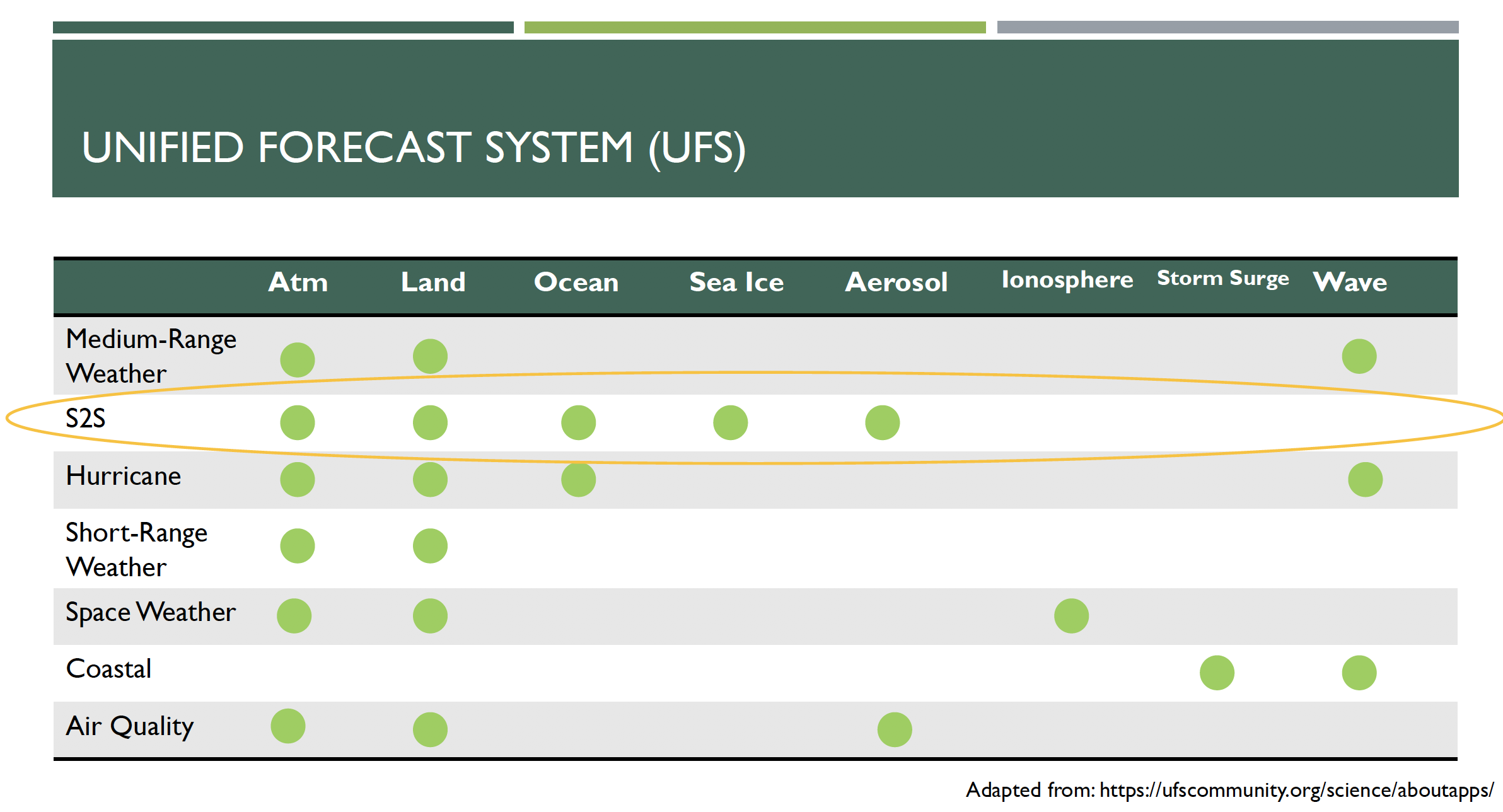CESM and UFS
Overview
Teaching: min
Exercises: minQuestions
What is CESM?
How does it differ from UFS?
Why do we use CESM in this class?
Objectives
Understand the differences between these two models
Learn about CESM
Last week you learned about the NOAA/Unified Forecast System from Dr. Stan. Today we will learn about the NCAR/Community Earth System Model. How would you know which model you want to use for your work? Here are some pros/cons of each model.
NOAA/Unified Forecast System (UFS)
- Website: https://www.ufscommunity.org/
- UFS is not yet easy to run for research purposes
- Challenging to modify for a specific purpose, but this will improve in the future – concerted effort to document and provide community support
- The “public release” version is only the Atm & Land components, although experimental unsupported atm-land-ocn versions exist.
- Existing, publicly available experiments consist of Atm/Land model re-forecasts and real-time forecasts
- Its primary mission is centered around prediction
- Components consist of Atm, Land, Ocn, Sea Ic, Aerosol, Ionosphere, Storm Surge, Waves
- Using the UFS for research has the potential to directly feedback to improving operational predictions.
- Several people in AOES work with this model as a research tool (e.g. Stan, Cash, Kinter)

NCAR/Community Earth System Model (CESM)
- Designed for community use – easy to use for research
- Large community of people working with CESM – Organized in working groups that are open to all (http://www.cesm.ucar.edu/working_groups/)
- Easy to get help, lots of documentation: (http://www.cesm.ucar.edu/)
- CESM has different (and more) Earth system components
- Many components can be combined together in endless combinations
- Easy to change configuration (e.g. output frequency, grid).
- Primary mission is climate oriented
- Many existing climate simulations and now hindcasts (CMIP, large ensemble, decadal prediction, S2S prediction)
- More recently starting to be used for prediction/predictability purposes (e.g. new Earth System Prediction Working Group).
- Lots of people in AOES work with this model.

Key Points